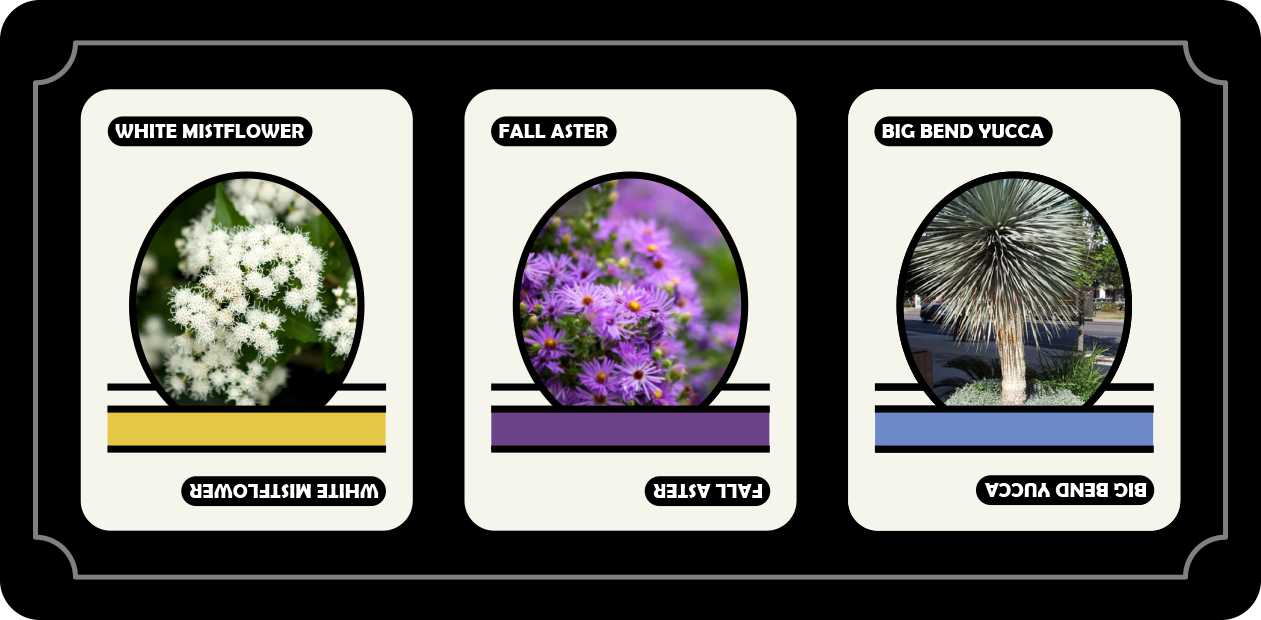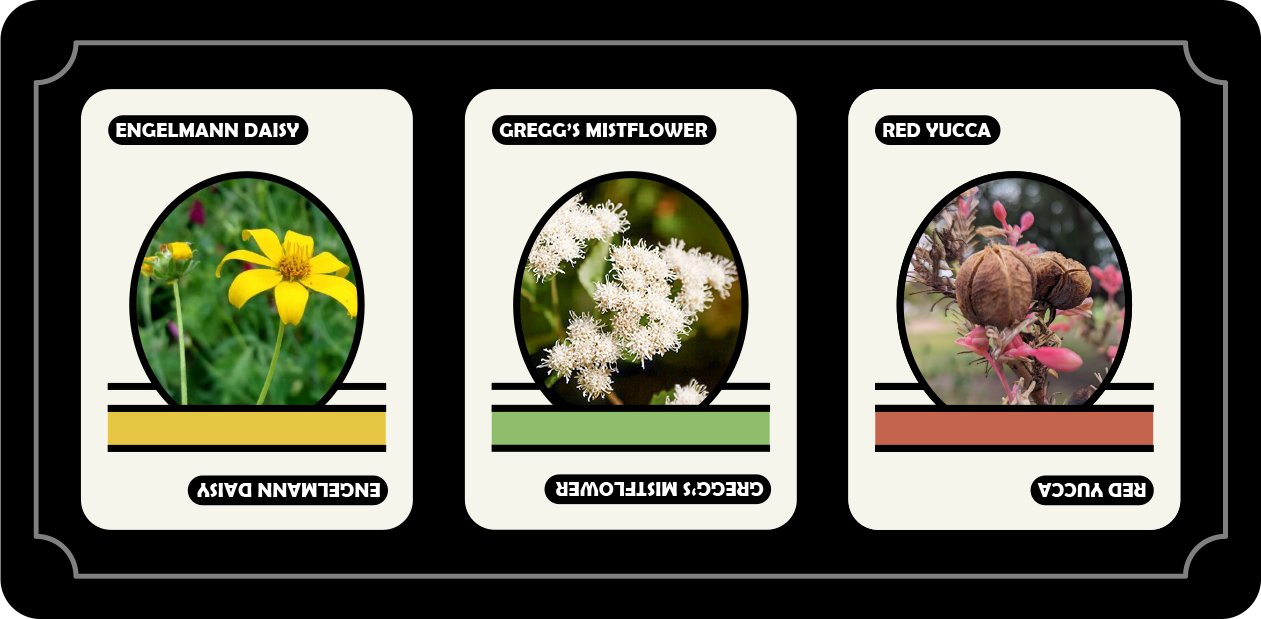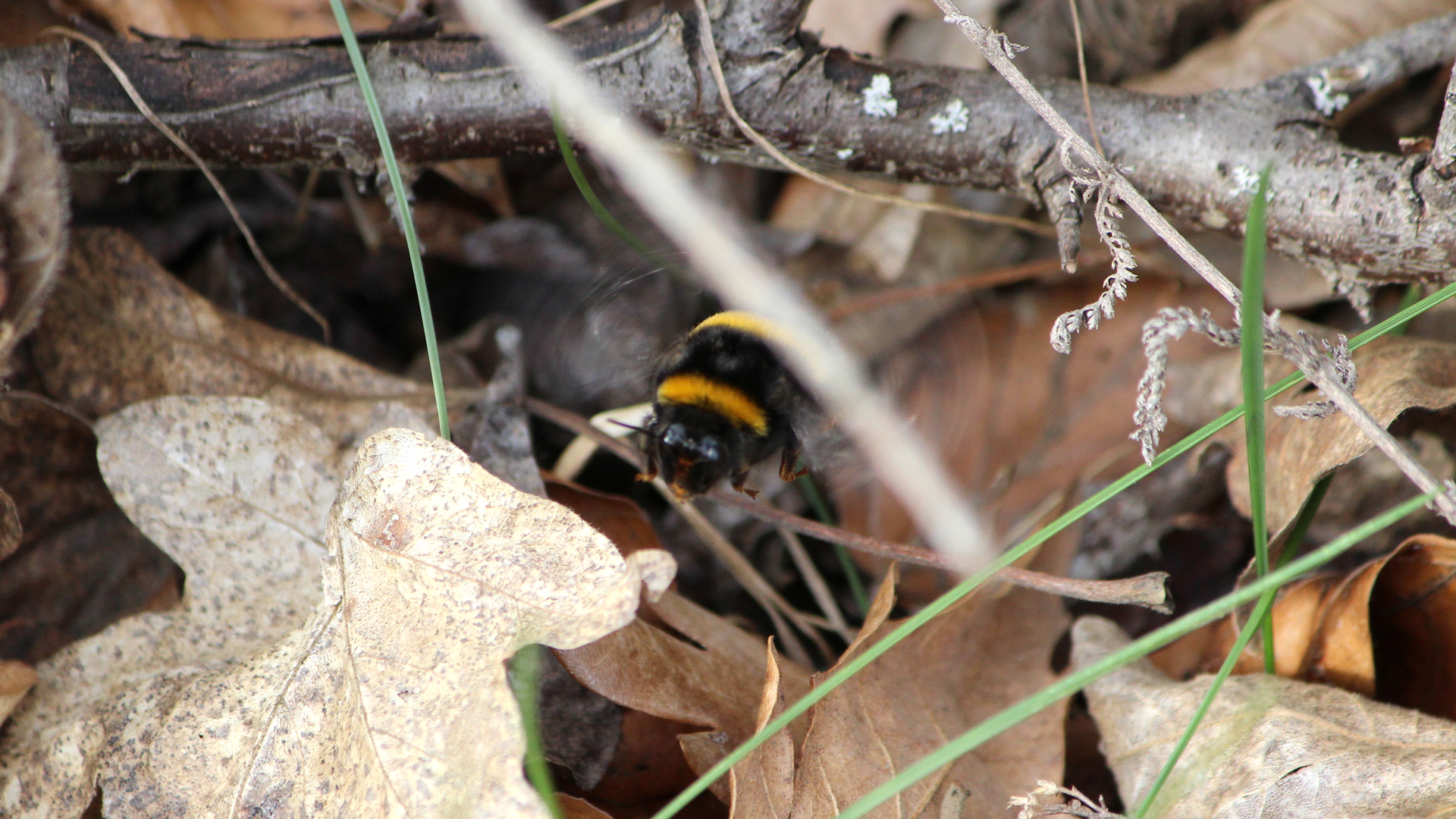Don’t let drought be a plot twist. Discover the secrets to a yard that thrills despite drought — and provides a wild escape for pollinators.
Thrilling, spine-chilling and full of mystery — yes, that’s gardening in South Texas. Come closer and listen to my tales of the garden, full of a summer’s suspense and a caution for the fall.
Three thrillers
This summer was a roller-coaster ride of anticipation as I waited to see how the drought would affect my garden. Late summer was intense as San Antonio hit a record 74 days over 100 degrees. Could our plants survive the never-ending summer scorch? Sweat dripping from my brow, I hand-watered once a week … and waited.
In the end, my native plants turned out to be the fall heroes of my landscape. Surprised? Not really. White mistflower was thrilled with all the hand watering and promises a delirious profusion of white blossoms for pollinators in the next couple weeks. And despite smaller than usual growth, fall aster is as shockingly showy as ever.
What never caused me to bat an eyelid, you ask? Pale against the sun, my Big Bend yucca was a summer stunner with its long, thin leaves that appear blue-gray. Plants adapted to hot, dry areas often have paler colors, small or narrow leaves, “hairy” or waxy leaves that hint at their true purpose — reflecting light from the hot sun and protecting the plant from water loss. Keep an eye out for these characteristics in your plant selections and minimize any summer nail-biting.
Spine-chilling delights
Lying in wait for the rains to reappear, many annual plants have adapted to spend summers as seeds. When dark, thunderous clouds deliver water in the cooler fall, wildflower seeds will germinate into low-growing rosettes and develop over the winter months before they bloom in the spring, offering nectar to pollinators in return for their services.
You might be tempted after the summer to go on a slashing spree, cutting out all the dead plants in your yard, but waiting might send thrills of delight up your spine.
I discovered new leaves sprouting from the base of my Engelmann daisy and new flowers appearing next to old seedheads on the flower spikes of my red yuccas. Summer-scorched leaves hang on my Gregg’s mistflower as green creeps along stems and tiny new leaves unfurl. I’m reminded of how long it took some plants to recover after the big freeze in 2021.
Another good reason to avoid “cleaning up” your garden in fall — it helps support wildlife! Save your stems and seedheads for overwintering insects and hungry birds. In the spring, cut stems to create natural nesting habitat for native bees and keep an eye on them for a peek into the hidden lives of these delightful and beneficial insects.
Let leaves stay in landscape beds to enrich the soil for your plants and provide insulated places for tiny critters to live during our chilliest season. Run your mower over any leaves in the lawn.
Whodunnit?
It was the sun in the garden with no rain. Not much of a mystery, really, but if you need help solving your landscape woes, search the resources on our GardenStyleSA.com.
- Drought shouldn’t be a plot twist. Find gorgeous, low-water-use plants to save the day! Every year.
- Mystified by something strange? Explore our Garden Problem Solver.
- Foiled by a first season of gardening in San Antonio? No need to puzzle it all out by yourselves, new gardeners! We’ll tip you off to everything you need to know in our Gardening 101.
- No sleuthing necessary! Our Plant by Numbers landscape designs are a simple solution to resolve any landscape drama.
- Wondering whether to water? It’s no secret using our seasonal watering advice can save up to 30% or your annual water use.
We promise, no red herrings to be found! But if you’re still stumped, reach out to our Garden Geek.
And if you’re in possession of an enigmatic irrigation controller, we can send help! Call 210-704-SAVE (7283) to schedule a free irrigation consultation. Spoiler alert: An average consultation saves 4,000 gallons a month!







